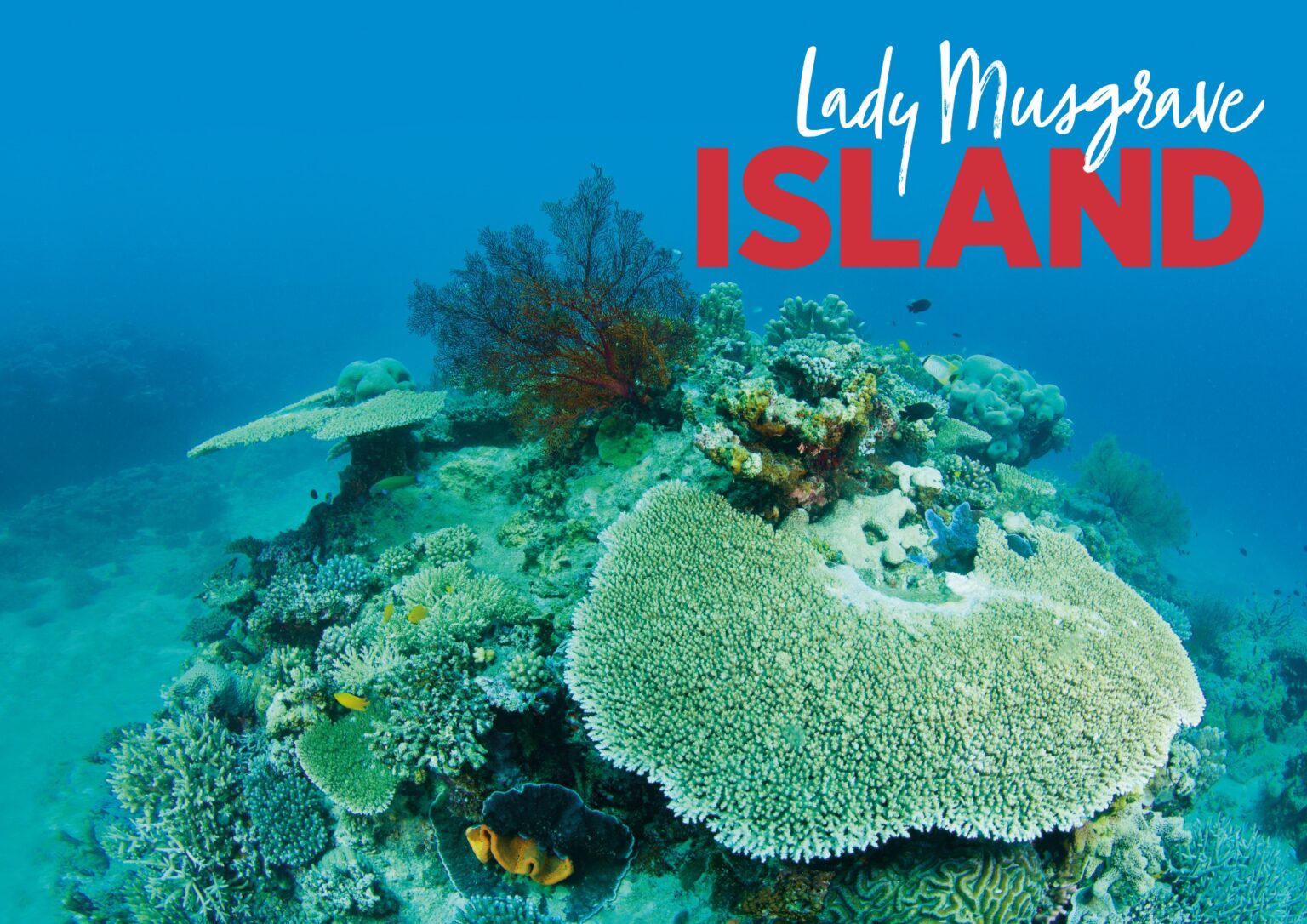Adrian Stacey heads out to the picturesque Great Barrier Reef island to sample the overnight ambience of Lady Musgrave HQ, and the diving in the lagoon and on the outer reefs
Photographs by Adrian Stacey, Mark Fitz and Lady Musgrave Experience
Lady Musgrave Island is located on the northern tip of a vast lagoon at the southernmost reaches of the Great Barrier Reef. This tiny coral cay is an important turtle nesting site, and the waters surrounding the island are rich in marine life.
The Lady Musgrave Experience have been bringing enthusiastic divers and snorkellers here for years. Still, until recently, the only way to spend the night at this stunning location was to camp on the island, which only offers basic facilities. Now, however, there is a second option.
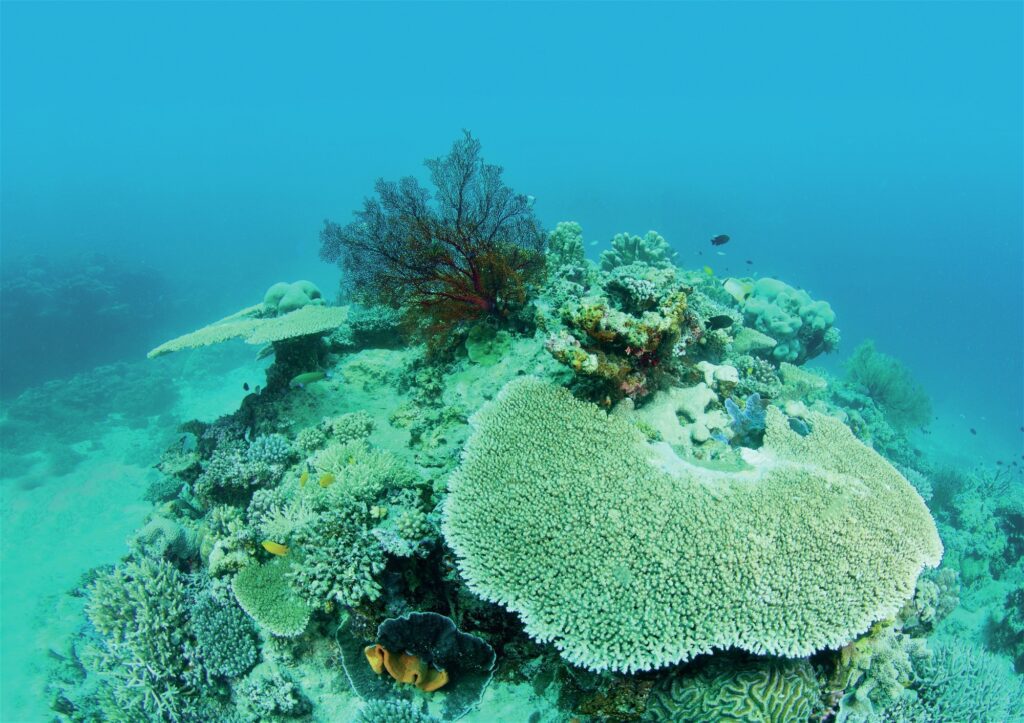
From Camping to Glamping on the Reef
Although somewhat delayed by COVID, Lady Musgrave HQ is now open. This pontoon, nestled in the sheltered waters of the lagoon, offers the opportunity to spend a night under the stars in top deck glamping beds, or under the ocean in the dorm-style observatory.
There are daily trips out to the island from Bundaberg, or to be more precise, Burnett Heads, and as it is only a four-and-a-half hour drive from Brisbane, we decided to make this a family trip. We packed the car full of dive gear, camera equipment and excited kids, the day before the excursion and drove to the nearby town of Bargara to spend the night.
The journey out to Lady Musgrave Island takes around two hours, and in the whale season, this crossing offers a great opportunity to witness the annual humpback whale migration that occurs from July to October.
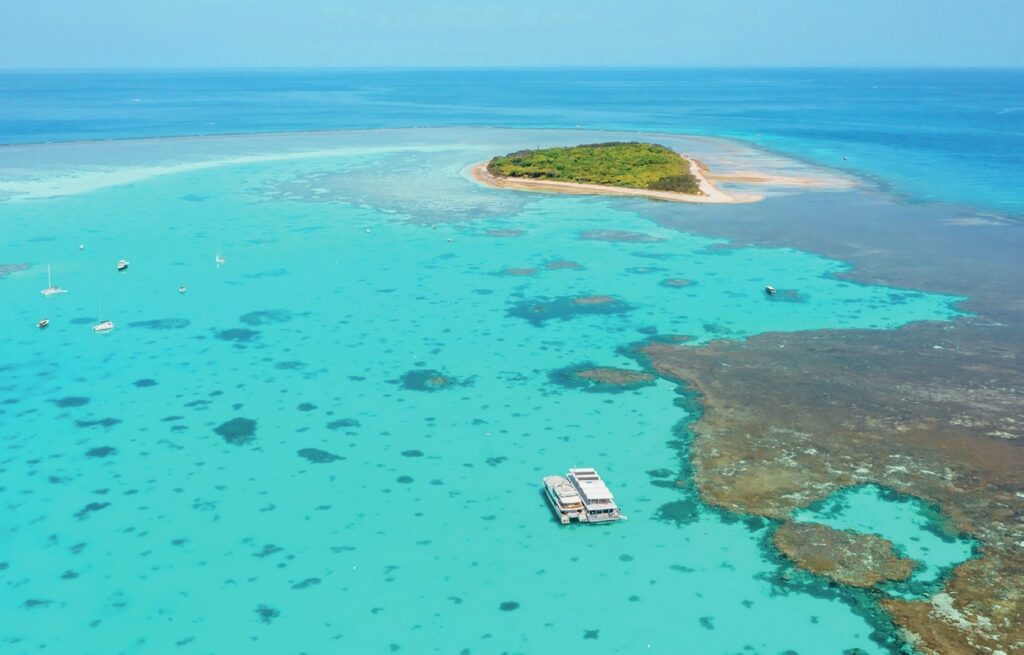
The Underwater Marvels of Lady Musgrave Lagoon
The pontoon is in a fantastic location, mere metres from the reef and a turtle cleaning station. Steps down to the water’s edge make entries and exist easy, and the pristine corals, schools of fish, and turtles make this a great place for kids and parents alike to explore the reef.
After snorkelling for a while, we had an excellent buffet lunch, followed by a glass-bottom boat trip out to the island, a few hundred metres away. The island is covered in Pisonia trees and swarming with noddy terns and shearwaters.
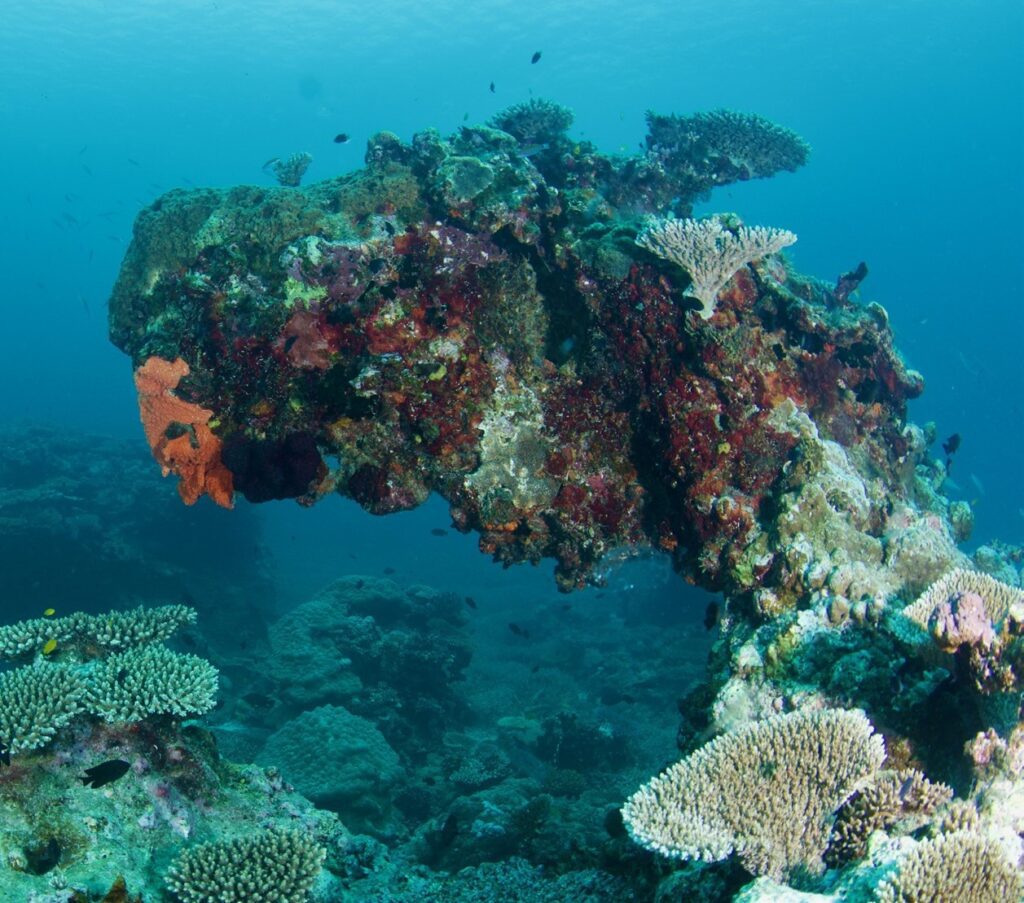
In fact, due to their vast numbers and subsequent bird droppings, the island was mined for guano (bird droppings!) in the late- 1800s.
Our visit coincided with the turtle hatching season. Although we did not see any hatchlings run the gauntlet down the beach to the safety of the ocean, we did see plenty of exhausted mothers recover from their nightly exertions in the waters nearby.
Once back at the pontoon, there was still plenty of time to venture down to the observatory below becks, plus more snorkelling, and then just before the boat departed back for the mainland, there was a fish-feeding show, which the kids loved.
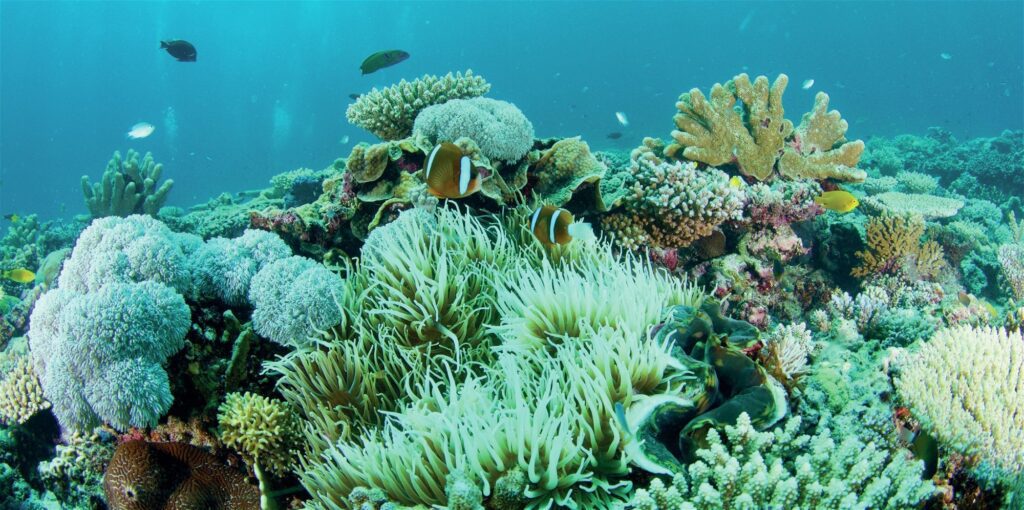
For overnight visitors, the minimum age for guests is eight years old, and as my kids are not quite there yet, it meant that I would spend the night on the Great Barrier Reef on my own.
This news was not well received by the junior members of the family, who tried to hide in my glamping bed when the boat was due to leave, but after promises were made to return when they were old enough, they reluctantly left.
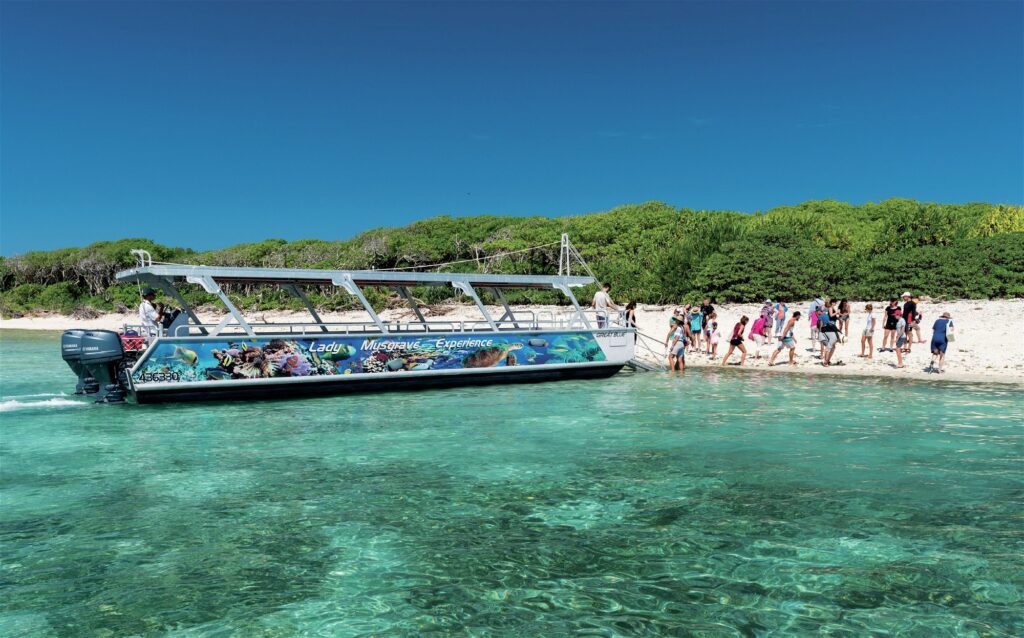
During the day, there is an excited bus around the platform with snorkellers and divers getting in and out of the water, and glass-bottom boats ferrying people back and forth from the island, accompanied by all the noise, and you would expect from a large group of people enjoying themselves.
However, once the day trippers depart, the pontoon becomes a very different, tranquil place. School groups or dive clubs usually use the deck’s dorm, which was not in use on this occasion, so just 12 of us stayed in the glamping beds on the spacious upper deck.
The beds themselves have zip-down cavass covers on all four sides so they can be left open during the day for ventilation, and then closed at night for privacy.
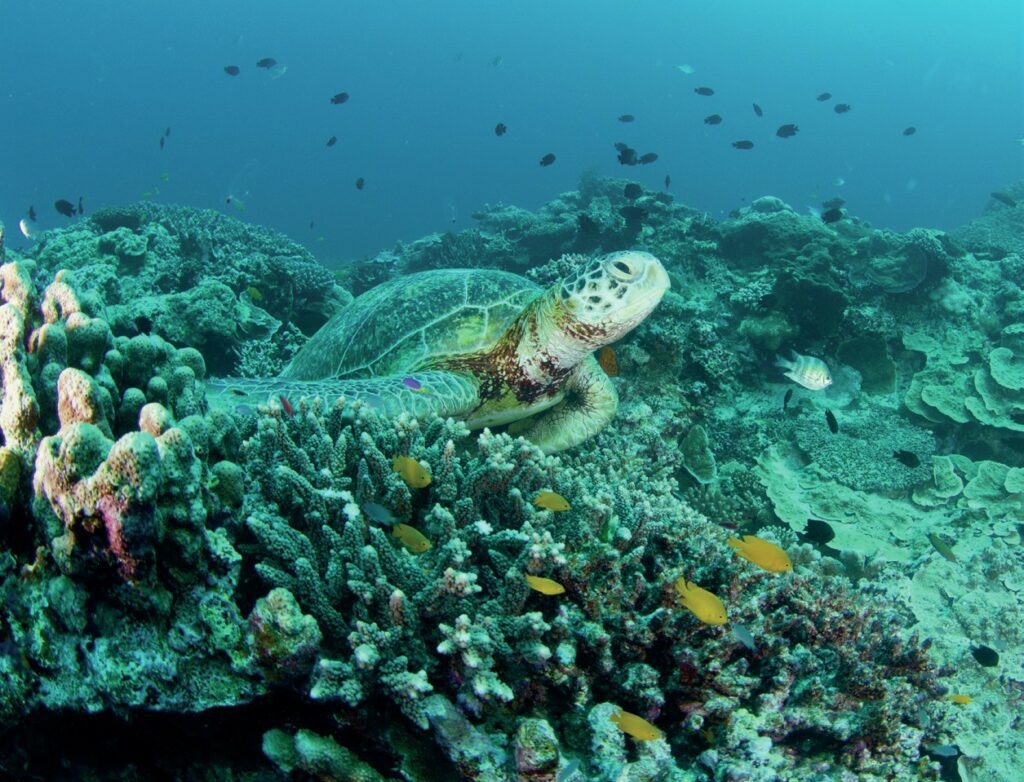
There is also storage draws under the beds, plus more lockers located on the sea-level deck that offers storage space for overnight bags. There is also plenty of space to stow and hang up dive gear. On the sea-level decks are the toilets and shower rooms – with hot water, I was pleased to note.
The boat back to the mainland departs at around 2.30pm and dinner is served at about 7.30pm, so I had plenty of time to squeeze in a couple of dives in the lagoon.
The maximum depth in this area is only around 6m, so I spent about 80 minutes visiting the nearby cleaning station and exploring this expansive site for my first dive. The reef here is pretty much exclusively made up of hard corals.
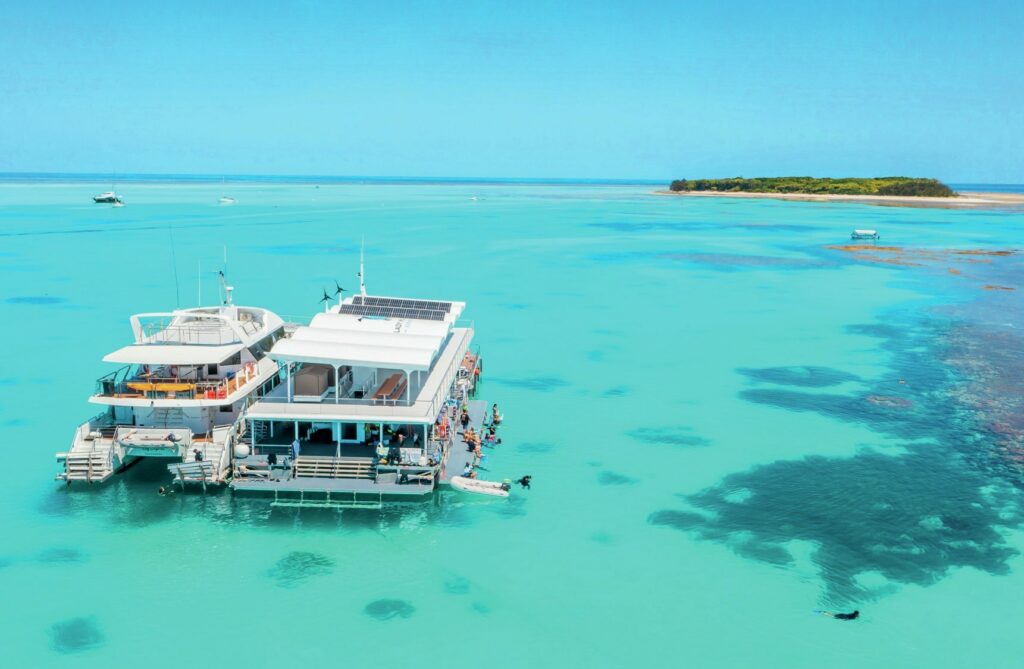
Massive porites coral tower above huge expanse of various branching corals, which are home to thousands of schooling damsel and glassfish. The reef also supports coral grouper, potato cod, snapper and, of course, plenty of turtles.
For my second dive, I snooped around some of the many small coral bommies directly under the pontoon at sunset. This diminutive little piece of reef hid a variety of nudibranchs, cleaner shrimps and wrasse, and was patrolled by several hungry lionfish.
Mandarinfish can also be found on the nearby reefs, but these shy little creatures evaded me on this occasion. All in all, I had two excellent dives just metres from the pontoon.
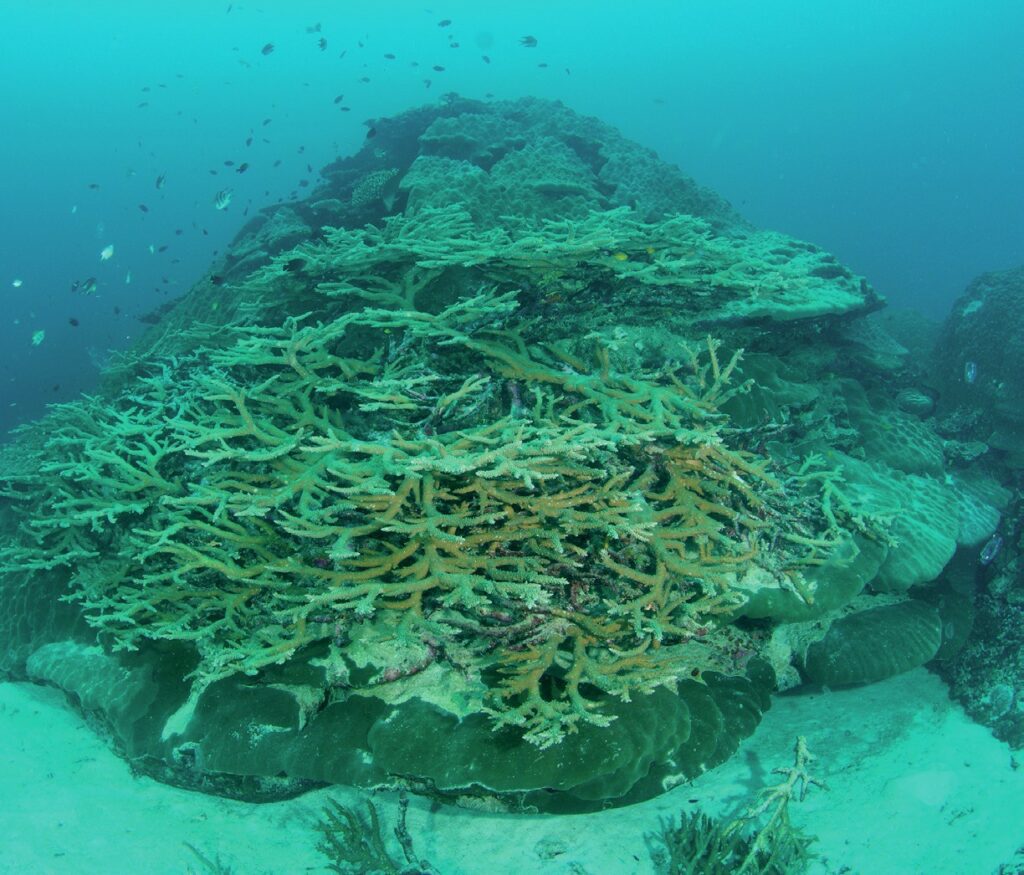
Did you know?
The island itself is only 8km in circumference but is surrounded by a reef lagoon perfect for snorkelling. The island supports several species of bird life, flora, fauna and a population of green and loggerhead turtles.
After the sunset dive, we enjoyed an excellent dinner cooked by the onboard chef in the open-air kitchen. The food really was outstanding, and after a couple of nightcaps, it was time to retire for the night.
I must admit waking up to the sunrise in the middle of a gorgeous lagoon on the Great Barrier Reef, with stunning Lady Musgrave Island as a backdrop, is a wonderful experience, and was topped off with a great breakfast.
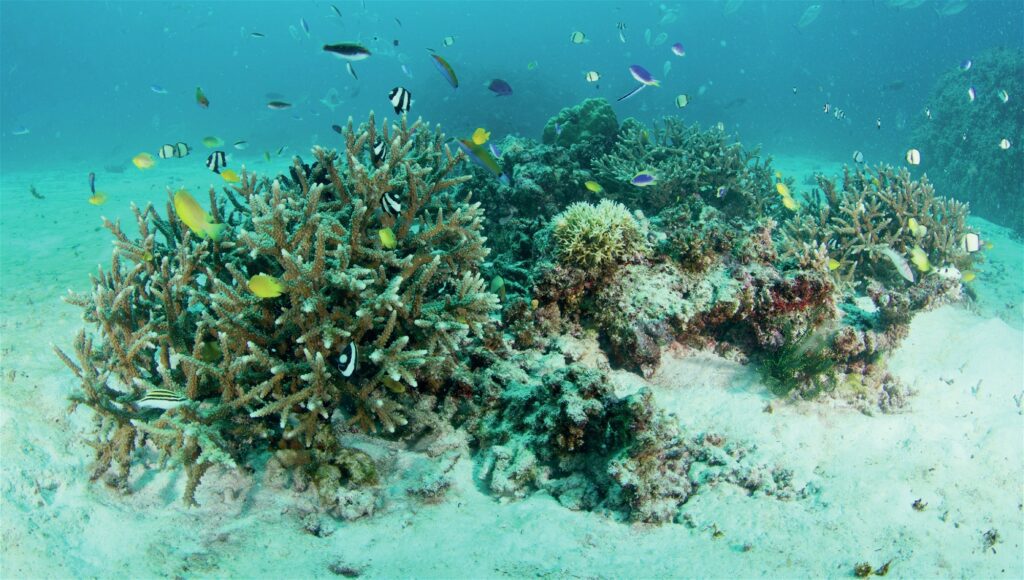
Diving Beyond the Lagoon's Borders
We had two dives on the outer reef planned for my second and final day on Lady Musgrave HQ, but as the first one was only going to be at around 10am, there was plenty of time to go for another snorkel and to use one of the glass-bottom kayaks.
Much like the lagoon, the corals on the outer reefs are in exceptional condition; only there are more of them in both numbers and variety. Much of this region is a green zone, meaning nothing can be taken from the area, not even a shell from the beach.
The result is pristine reefs with plenty of fish stocks. The dives on the outer reef usually have a maximum depth of around 15- 20m, and mantas are regular visitors. Unfortunately, on this occasion, none were in attendance. Fortunately, there was plenty of other big stuff on offer.
Due to the excellent conditions, the first dive of the day was at the nearby Fairfax Reef, a brief 15-minute boat journey away in the dedicated dive boat stationed at the pontoon. On our descent, we encountered a large bull shark, and throughout the dive, we were visited by white-tip reef sharks and turtles.
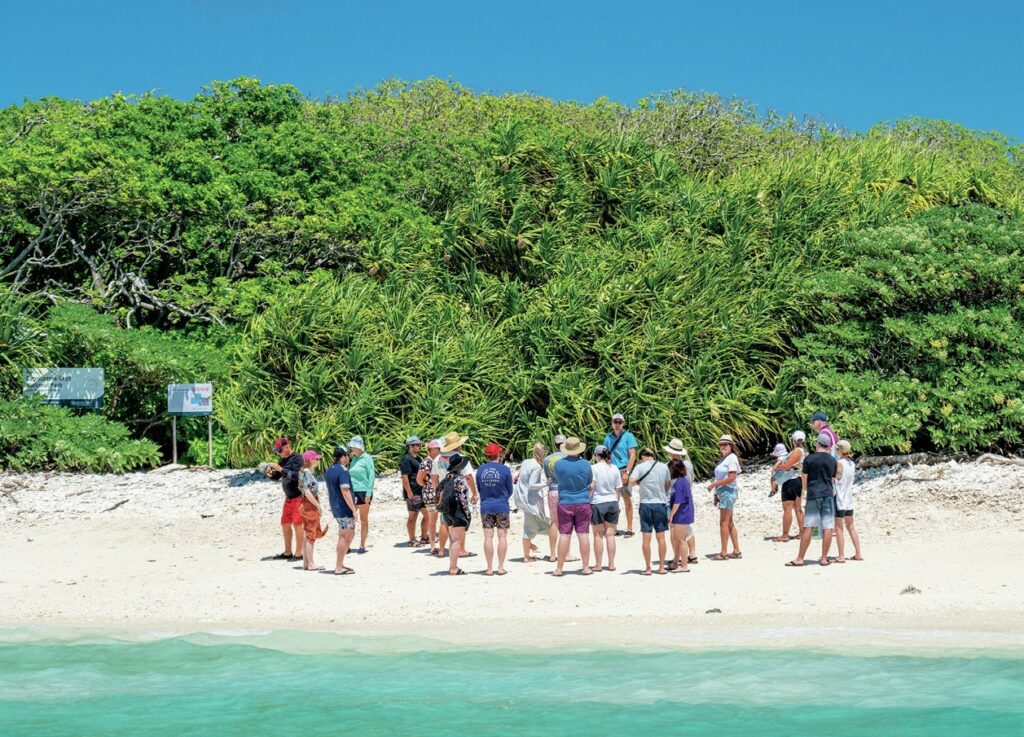
There were also plenty of schools of fish, including jacks, jewfish and snapper. The deeper parts of the dive site boasted humongous brain corals, often shimmering with swarms of glassfish. The shallow areas were a maze of sandy gullies and hard coral ridges, where giant clams and anemones with resident anemones fish had colonised.
For the second dive, we returned to Lady Musgrave Island and dived the outer reef of the lagoon. Giant marble rays cruised past at the beginning of the dive, joined by several large remoras, and more reef sharks were in attendance.
The sandy ocean floor partially hid a massive fantail ray and was pockmarked with small bommies that hid a myriad of dancing reef fish. A couple of shy Napoleon wrasse hid among the hill-like structures of the porites corals joined by Moorish idols, angel fish and coral grouper.
Schools of surgeons swept across the reef. One large section of the reef was dominated by layer upon layer of substantial plate corals. The whole dive was accompanied by the constant crackling and popping noise of the snapping shrimp, which are signs of a healthy and vibrant reef.
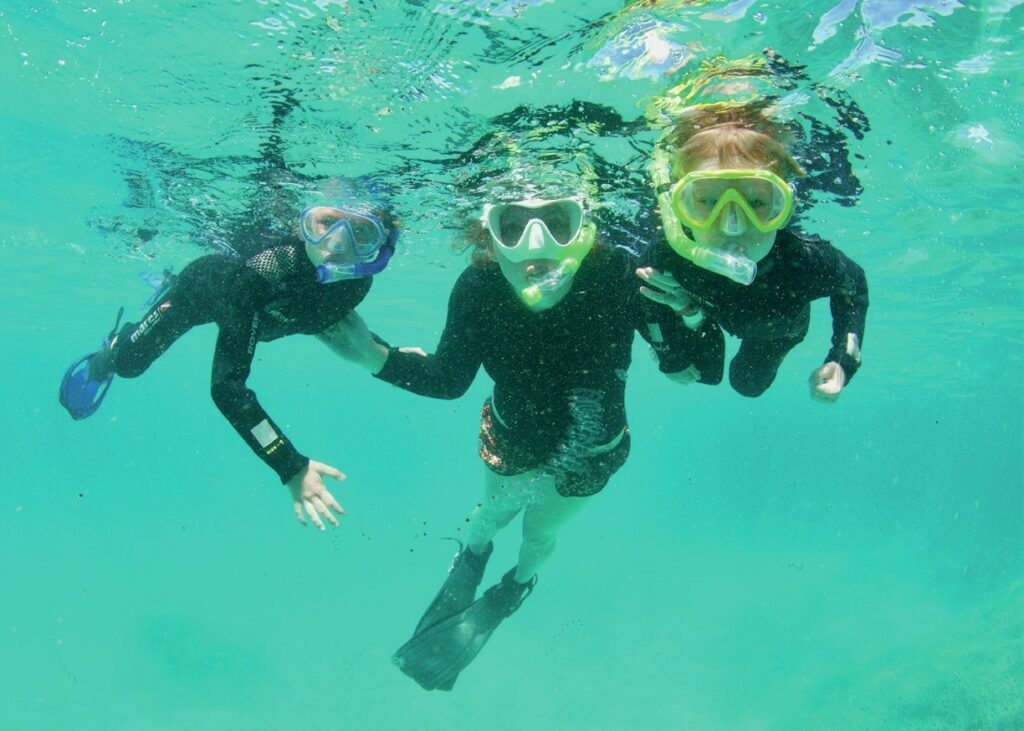
I must admit I was not sure what to expect from my night on Lady Musgrave HQ, and while the dorm-style observatory does not really appeal to me, the glamping beds on the upper deck were superb, and I could have quite easily spent another night or two.
As for the diving, this too exceeded my expectations. The corals are in remarkable condition, and the healthy reef attracts all manner of marine life, from tiny critters up to large pelagics.
Lady Musgrave Island and the other surrounding islands and coral cays that make up the southern great barrier reef are relatively untouched by divers and are well worth exploring in greater depth!
Lady Musgrave Experience
Being an Advanced Eco-Certified and award-winning company, Lady Musgrave Experience operates with minimal impact on the environment and is committed to protecting the coral reef and marine environment while ensuring you have an unforgettable once-in-a-life-time experience. There’s something for everyone, with a variety of tours that are both educational and inspirational. Lady Musgrave Experience also offers Citizen Science programmes, whale watching tours (in-season from July to October), learn-to-dive courses, wellness and yoga retreats, indigenous cultural experiences and photography workshops all year round, each packaged with accommodation onboard Lady Musgrave HQ. A second Citizen Science-based pontoon is set to launch in late-2023, providing high-quality experiential learning, research and data collection for Lady Musgrave Experience guests.
This article was originally published in Scuba Diver ANZ #58.
Subscribe digitally and read more great stories like this from anywhere in the world in a mobile-friendly format. Link to the article
